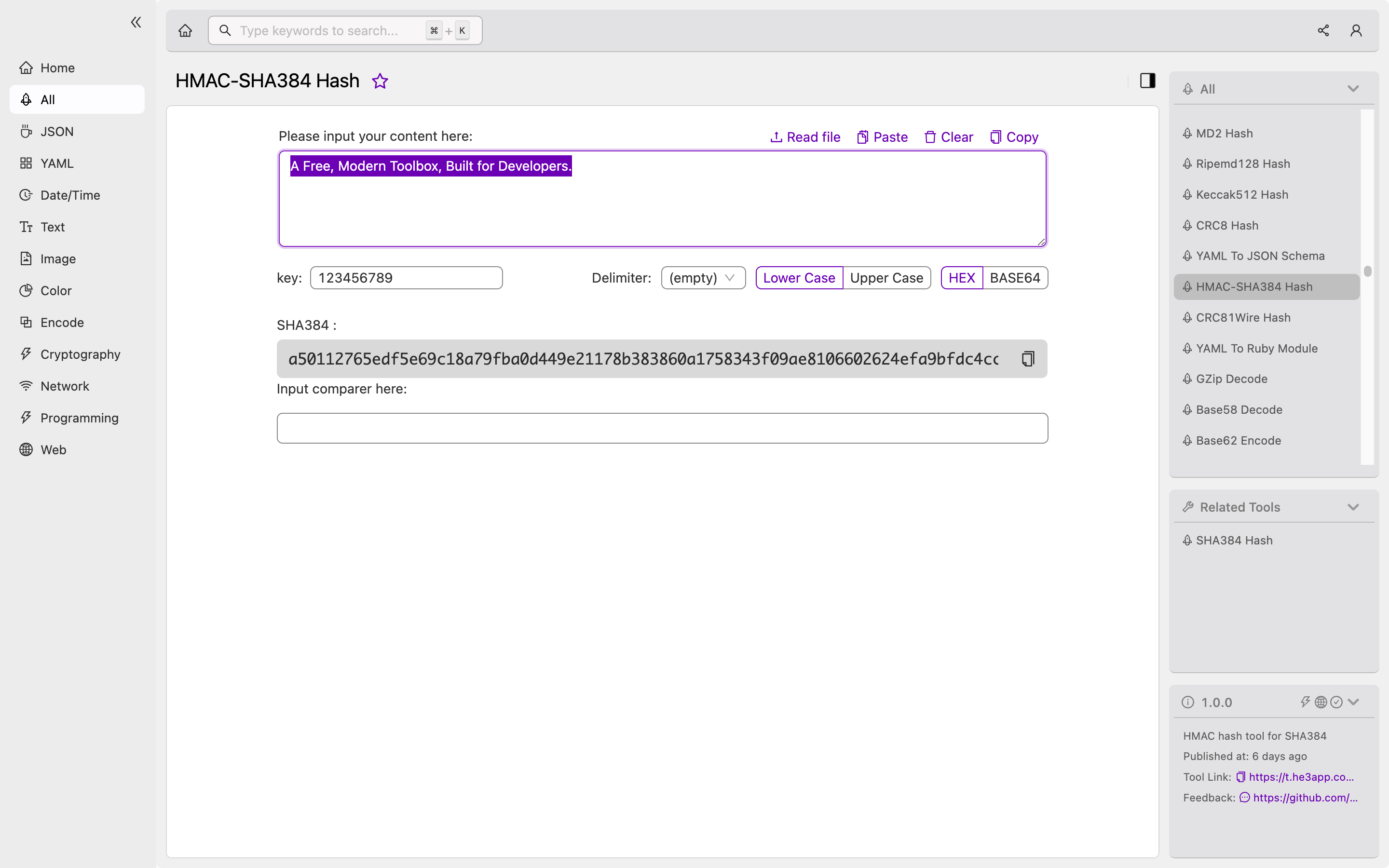As data security concerns continue to rise, developers are constantly on the lookout for ways to secure data transmitted over networks. One such way is through hashing, and HMAC-SHA384 hash is one of the popular algorithms used for secure hashing. In this article, we’ll explore what HMAC-SHA384 hashing is, its key features, scenarios of use, misconceptions, and FAQs.
What is HMAC-SHA384 Hash?
HMAC-SHA384 Hash is a type of secure hashing algorithm that combines the SHA-384 hash function with a secret key to create a keyed hash. HMAC stands for Hash-based Message Authentication Code, and it’s a widely-used standard for constructing secure hashes. HMAC-SHA384 Hash is a derivative of the HMAC algorithm, and it employs the same principles of keyed hashing.
How HMAC-SHA384 Hash Works
The HMAC-SHA384 Hash works by combining the input data message with a secret key, and then computing the SHA-384 hash of the result. The resulting hash is then encrypted using the same secret key to create a secure hash. The secret key is known only to the sender and receiver, which ensures that any changes made to the data can be detected during the authentication process.
To get started with HMAC-SHA384 Hash, you can use the following code in Python:
import hmac
import hashlib
message = b'This is the message to be hashed'
secret_key = b'this_is_my_secret_key'
hash = hmac.new(secret_key, message, hashlib.sha384)
print(hash.hexdigest())Or you can use HMAC-SHA384 Hash tool in He3 Toolbox (https://t.he3app.com?ho83) easily.

Key Features of HMAC-SHA384 Hash
HMAC-SHA384 Hash has several key features that make it popular for secure hashing. These include:
- It’s a standard algorithm supported by most programming languages and operating systems.
- It’s resistant to collision attacks and other attacks that target the integrity of the data.
- It requires a secret key, which makes it harder for attackers to tamper with the data during transmission.
- It produces a fixed-length output that’s unique to the input data and the secret key.
Scenarios of Use for Developers
Developers can use HMAC-SHA384 Hash in several scenarios, including:
- Securing data transmitted over networks, such as passwords, credit card details, and other sensitive data.
- Verifying the authenticity of data received from a third party, such as an API response or a file download.
- Creating digital signatures to authenticate messages and documents.
Misconceptions and FAQs
Misconception: HMAC-SHA384 Hash is unbreakable
While HMAC-SHA384 Hash is a secure hashing algorithm, it’s not unbreakable. Attackers can still use brute-force or dictionary attacks to guess the secret key and tamper with the data. Developers should use other security measures, such as encryption and access control, to mitigate the risk of attacks.
FAQ: Can I use HMAC-SHA384 Hash for password storage?
HMAC-SHA384 Hash is not recommended for password storage since it’s a fast hashing algorithm that can be easily brute-forced. Developers should use slow hashing algorithms such as bcrypt or scrypt for password storage.
FAQ: What’s the difference between HMAC-SHA384 Hash and SHA-384 Hash?
The difference between HMAC-SHA384 Hash and SHA-384 Hash is that the former uses a secret key to create a keyed hash, while the latter doesn’t. HMAC-SHA384 Hash is more secure for data authentication since it requires a secret key that’s only known to the sender and receiver.
Conclusion
HMAC-SHA384 Hash is a secure hashing algorithm that’s widely used for data authentication and integrity. It combines the SHA-384 hash function with a secret key to create a keyed hash that’s unique to the input data and the secret key. Developers can use HMAC-SHA384 Hash in several scenarios, such as securing data transmitted over networks and verifying the authenticity of data received from a third party.
